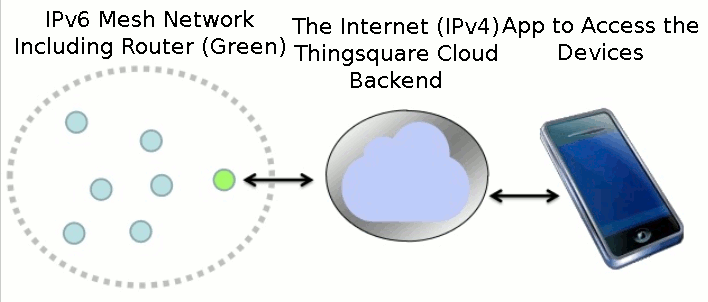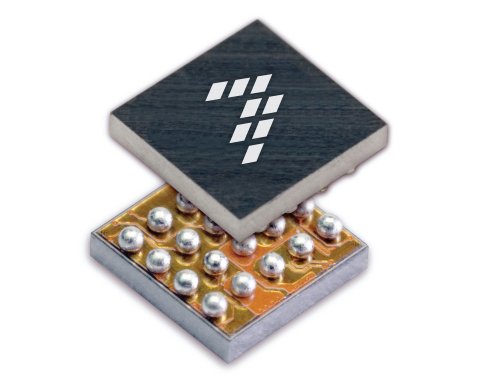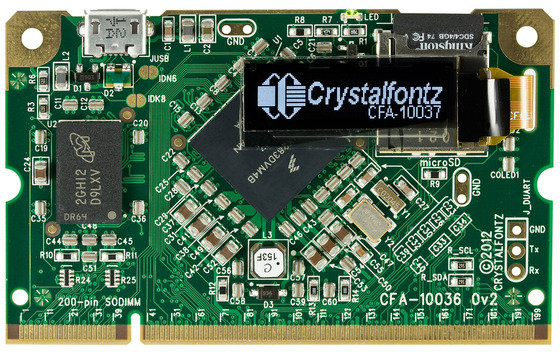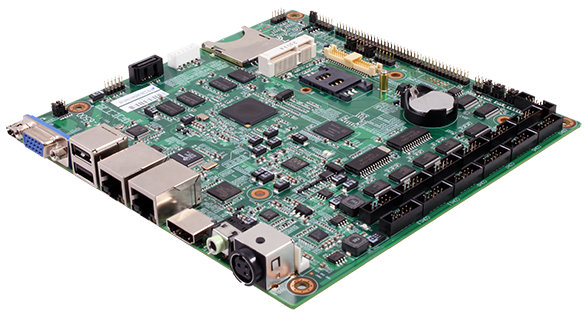Thingsquare recently released the source code for the Thingsquare Mist firmware, an ultra lightweight router software (<4 kB memory) for the Internet of Things based on open Internet standards such as IPv6, RPL (Routing Protocol for Lossy networks), and 6lowpan. Thingsquare Mist allows to connect battery-powered wireless micro-controllers to the Internet, and is currently used in applications such as smart light bulbs, connected home appliances, and connected cities. The IPv6 mesh network is composted of nodes with a low power radio that communicate with the Mist router (Green), which in turn connect to the Internet and Thingsquare Cloud backend (Thingsquare Haven) to store the data, and/or receive control commands via Ethernet or Wi-Fi. The end users can then use an App to monitor, and/or control the devices remotely. Thingsquare Mist uses IETF RPL IPv6 mesh routing protocol (pronounced “ripple”) for IPv6 nodes communications. Thingsquare Mist runs on several low-power wireless […]
Freescale Unveils Kinetis KL02, an Ultra Small (1.9×2.0mm) ARM Cortex M0+ Microcontroller
Freescale Semiconductor introduced the Kinetis KL02, the world’s smallest ARM MCU, at Embedded World 2013. KL02 is an ARM Cortex M0+ micro-controller designed to address the miniaturization needs of the Internet of things, and its size (1.9×2.0mm) makes it suitable for applications such as ingestible healthcare sensing, portable consumer devices, remote sensing nodes, and wearable devices. Kinetis KL02 MCU features include: 48 MHz ARM Cortex-M0+ core, 1.71-3.6V operation Bit manipulation engine for faster, more code-efficient handling of peripheral registers 32 KB flash memory, 4 KB RAM High-speed 12-bit analog-to-digital converter High-speed analog comparator Low-power UART, SPI, 2x IICI2C Powerful timers for a broad range of applications including motor control Power Efficiency – 15.9 CM/mA (Coremark 1.0) -40 °C to +85 °C operation The MCU is manufactured using chip-scale package (CSP) technology that allows to connect the die directly to the solder ball interconnects and, in turn, to the printed […]
mbed 2.0 SDK Released, becomes Open Source and Supports $12.95 Freescale Freedom Board
The mbed community has had a pretty busy week, with first the announcement that mbed SDK would become open source, the release of mbed 2.0, and finally support for the low cost Freescale Freedom board FRDM-KL25Zpowered by Kinetis Cortex M0+ KL25Z MCU. mbed becomes open source The mbed Software Development Kit (SDK), a C/C++ MCU software platform, has always been free (as in free beer) for both commercial and noncommercial use, and the large community around mbed has written tons of code for ARM microcontrollers. But now that the SDK has now a stable API, and the developers achieved transparent portability for code based on the SDK across multiple controllers and multiple toolchains, they decided to release the SDK source under an Apache 2.0 license. Although sharing modifications is encouraged, this license allows users to keep the changes closed if they wish to do so. mbed developers explain that the 3 […]
Developer Community for Freescale i.MX6 HDMI Dongles
Last week, I explained how to build U-boot, the kernel, and Android for Freescale i.MX6 HDMI dongle reference platform. Since them, there has been a bit more activity, with Richtechie releasing source code to some ARMTvTech members. However, this source code is very similar to the one released by Freescale, and misses some part present in the kernel config on GK802 such as CONFIG_MACH_MX6Q_RICHTECHIE, and the company clearly does not comply with the GPL. Let’s forget that for now, as Jasbir (who is also behind the Hackberry board) has managed to build and boot the kernel on his mini PC. There’s still more work to do, but at least we have a based to work on. In the meantime, I’ve noticed rz2k, an other developer, was also giving it a try on #arm-netbook Freenode IRC channel, so we decided to setup a few things to facilitate development and communication between developers. […]
Modular Graphics on Embedded ARM – ELCE 2012
Philipp Zabel, kernel developer at Pengutronix, discusses about graphics and video support for Linux on embedded SoCs at Embedded Linux Conference Europe 2012. Abstract: Porting Linux to new ARM based application processors has recently become easier than ever: the kernel gained many new frameworks like common-clock, oftree and pinmux. However, things get complicated when it comes to high end embedded graphics units.Those graphics systems tend to be composed of a multitude of on-SoC functional blocks that can operate on shared graphics buffers and video signals, as well as off-SoC encoder/converter chips that can be mixed and matched with any SoC.The old framebuffer is certainly not enough for today’s hardware any more, while modern frameworks like KMS and DRM have their own hassles on non-PC style graphics systems.The talk outlines issues we found while working on graphics and video support for the MX53 and MX6 CPUs and gives suggestions for possible […]
Embedded Linux Boot Time Optimizations – ELCE 2012
Alexandre Belloni, embedded Linux engineer and trainer at Adeneo Embedded, gives a presentation about different techniques to optimize boot time for Embedded Linux at ELCE 2012. He also explains how they’ve measured the boot time. Abstract: A common problem faced when embedding Linux is the long boot time before the system is functional. There are many ways to improve boot up time. For a particular project, we had to answer a CAN message from Linux userspace in less than 420 ms from going out of CPU reset. We will describe our methodology and the techniques we finally chose to implement in that particular use case. We will also detail how we measured the boot time efficiently. A live demo will show the results of our work. More specifically, Alexandre discusses two projects at Adeneo where boot time was critical: An automotive platform based on Freescale i.mx53 needs to reply to […]
Crystalfontz CFA-10036 ARM9 Embedded Module Running Linux 3.7
Crystalfontz America, a supplier of LCD and OLED display modules used in embedded systems, has launched a Kickstarter campaign to fund manufacturing and lower the cost of a system-on-module powered by Freescale i.MX28 featuring a small 128×32 OLED display, and lots of GPIOs. Here are the specs of CFA-10036 SoM: Processor – Freescale i.MX283 @ 454MHz (Optionally i.MX287) System Memory – 128 MB DDR2 (Optionally 256MB) Storage – microSD socket (Up to 64GB) Interfaces: 2x CAN interfaces 4x synchronous serial ports 10/100-Mbps 802.3 Ethernet MAC USB 2.0 OTG (connected to microUSB AB on CFA-10036. Used for development purpose) USB 2.0 host controller and PHY 5x UART plus one dedicated debug UART 2x I2C (OLED shares one of these) LCD, touch screen, keypad, and rotary encoder support RTC with 32KHz crystal (requires continuous power) 4x 32-bit timers 8x PWM 5x 12-bit 428KS/s ADC channels 1x 12 bit 2MS/s ADC channel 91 GPIO […]
Habey Unveils MITX-6500 mini-ITX Embedded Board Powered by Freescale i.MX53
There aren’t many mini-ITX ARM board, and the only one I can recall is Kontron KTT30/mITX based on Nvidia Tegra 3. But there’s now at least one more mini-ITX ARM board thanks to Habey MITX-6500 embedded board. This mini-ITX board feature Freescale i.MX535 or i.MX536 processors, 1GB DDR3 and a 4GB on-board SSD. Since this is mainly an industrial board, it also features 2 Ethernet NIC and a whooping 13 COM ports. The board is suitable for a range of applications such as human to machine interfaces, data acquisition, point of sale, vehicle telematics, digital signage, industrial automation, building controls and connected appliances. Contrary to many other embedded companies, Habey also sells the board available to individuals. Here are the specifications of this board: CPU – Freescale ARM Cortex A8 i.MX535 @ 1 GHz or i.MX536 @ 800 MHz System Memory – 1GB on-board DDR3 Storage – 1x SATA 3Gb/s, 1x […]






